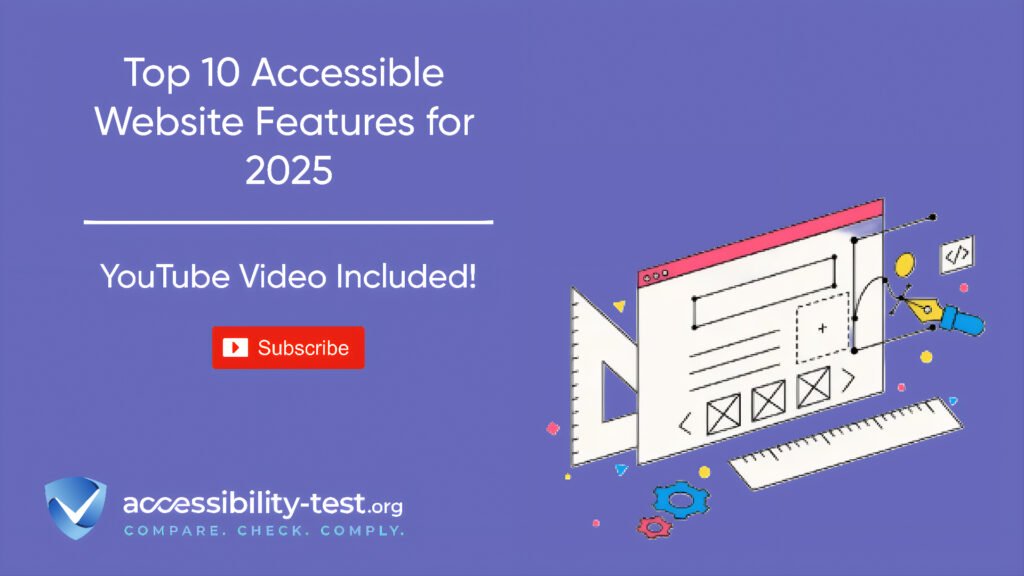What Is Web Accessibility?
In our increasingly digital world, web accessibility has emerged as a critical factor in website design and development. The need for inclusive web design is highlighted by the ongoing advancements in technology and evolving guidelines, such as the upcoming WCAG 2.2 standards. These guidelines aim to ensure that websites are accessible to all users, particularly individuals with disabilities, but they also provide a more enjoyable and functional experience for everyone.
Web accessibility refers to the practice of making websites usable for people with varying abilities and disabilities. This includes considerations for users who are visually impaired, hearing impaired, or have cognitive disabilities. By adhering to accessibility standards, web developers and designers are not only complying with legal and ethical obligations but also recognizing the value of a wider user base. Accessible websites can significantly enhance the overall user experience, leading to increased engagement and satisfaction.
At its core, web accessibility is about creating a level playing field for all internet users. When web features are designed with accessibility in mind, they become more intuitive and easier to navigate. This principle is increasingly important as the demographics of internet users become more diverse, reflecting a broader range of needs and preferences. Furthermore, accessible websites can improve search engine optimization (SEO) and potentially lead to higher rankings on search engines, illustrating that web accessibility is beneficial not only for users but also for businesses aiming to reach a larger audience.
In conclusion, understanding and implementing web accessibility practices is essential in today’s digital environment. By focusing on these practices, we can ensure that all users, regardless of ability, can access, navigate, and interact with websites effectively. This commitment to accessibility not only aligns with evolving guidelines but also fosters a more inclusive online community for everyone.
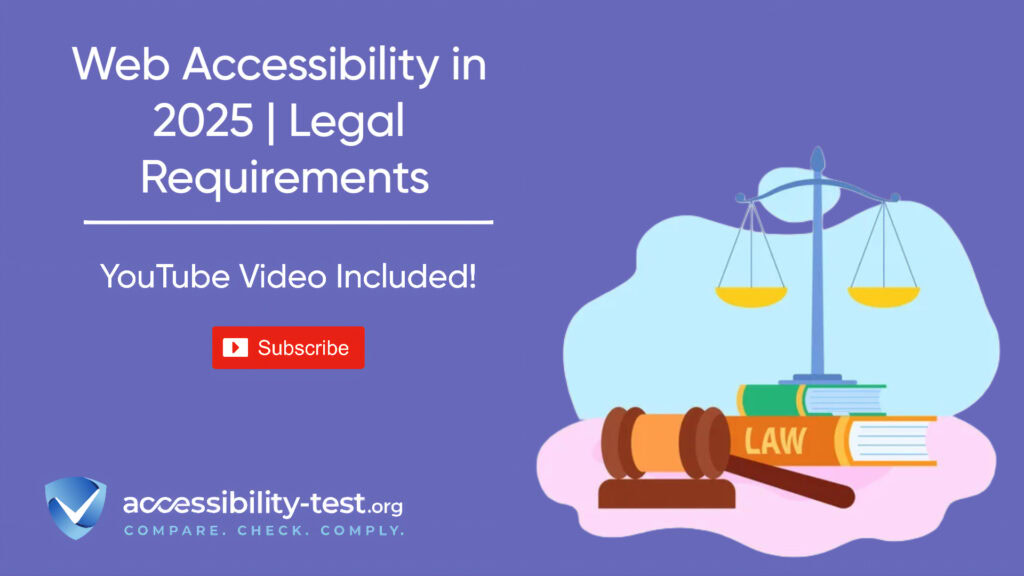
Enhanced Navigation Systems
As the digital landscape continues to evolve, the importance of accessible navigation systems in web design becomes increasingly evident. These systems are essential for users with disabilities to effectively interact with websites. Implementing features such as skip links and mega menus can significantly enhance the user experience. Skip links offer a direct path to specific content, allowing users to bypass repetitive navigation elements. This is particularly beneficial for individuals utilizing screen readers, as it saves time and minimizes frustration during the browsing process. Best practices dictate that skip links should be clearly visible and positioned at the top of the webpage.
Regarding mega menus, they can provide an organized layout of navigation options, allowing users to see more choices at a glance without overwhelming them. To ensure their accessibility, it is crucial that mega menus are compatible with keyboard navigation and are announced properly by screen readers. They should also be designed to maintain clarity and simplicity, avoiding an excess of options that could confuse users. Incorporating consistent visual cues and maintaining high-contrast ratios improves both visibility and usability across various devices.
Furthermore, the implementation of clear labeling and logical groupings of menu items ensures users can locate information quickly and efficiently. Semantic HTML tags should be utilized to enhance navigation’s compatibility with assistive technologies. Labels should be descriptive and concise, providing users with a clear understanding of where each link leads. It is also essential to consider touch targets in mobile designs; these targets must be sufficiently large and spaced apart to accommodate users with motor impairments.
The development of enhanced navigation systems that prioritize accessibility will undoubtedly contribute to a more inclusive web experience. By following these best practices, web designers and developers can create a digital environment that supports users of all abilities, fostering equal access to information and services.
Media Accessibility Requirements
As the digital landscape evolves, it is essential that multimedia content, including videos and audio materials, remains accessible to all users, particularly those with disabilities. Accessibility requirements for media are increasingly prioritized to ensure inclusivity. One of the critical components of media accessibility is the utilization of audio descriptions. These extended audio descriptions provide essential visual context, enabling individuals who are blind or have low vision to understand video content more fully. By incorporating detailed descriptions of visual elements, creators can significantly enhance the viewing experience for these audiences.
In addition to audio descriptions, live captioning tools play a vital role in making real-time media accessible. Captions not only assist individuals who are deaf or hard of hearing but also improve comprehension for a broader audience. As such, the implementation of live captioning solutions is being recognized as a fundamental requirement for compliance with accessibility standards. Various tools are available, each with distinct features, including automated captioning and human-generated subtitles, which can impact accuracy and response time during live events.
When selecting a captioning solution, it is essential to consider factors such as compatibility with different media platforms, the ability to customize captions for varying needs, and the overall cost-effectiveness of the service. Services that offer a combination of both automated and professional captioning may provide a balanced approach, addressing the immediate needs of users while ensuring a higher accuracy rate. By evaluating different captioning options, content creators can enhance their media offerings and adhere to the accessibility mandates. Ultimately, the pursuit of media accessibility requirements not only fulfills legal obligations but fosters a more inclusive digital experience for all users.ll individuals, regardless of their abilities.
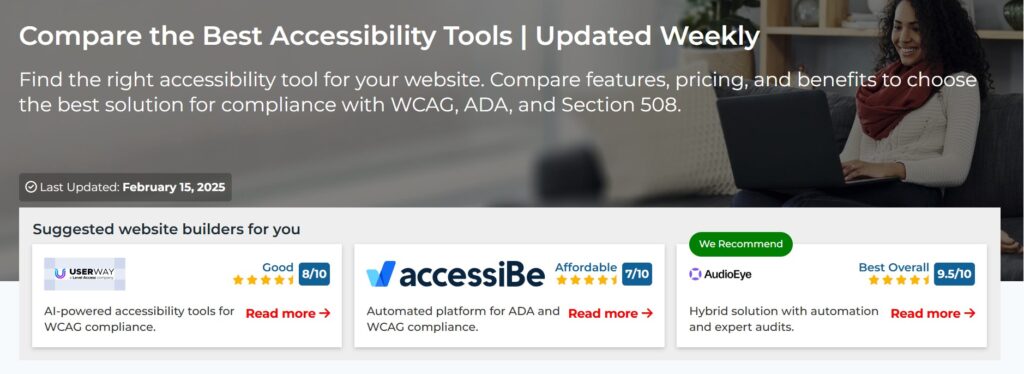
Responsive Design and Mobile Accessibility
The significance of responsive design in the ever-evolving digital landscape cannot be overstated, particularly in light of the growing reliance on mobile devices for internet access. As more users navigate the web through their smartphones and tablets, websites must adapt seamlessly across various screen sizes and orientations. A responsive design ensures that users receive an optimal experience, regardless of the device they are using, thus meeting the emerging standards of web accessibility.
Responsive design not only enhances aesthetic appeal but also plays a crucial role in supporting user-friendly touch gestures. To accommodate diverse user interactions, websites must prioritize the WCAG 2.2 targets, which dictate the ideal size and usability of interactive elements. Larger buttons and appropriately spaced clickable areas help users navigate with ease, reducing frustration and increasing overall engagement. Implementing these guidelines ensures that websites are not only visually appealing but also functional for a broader audience, including those with disabilities.
When developing a responsive design, it is essential to consider flexible layouts, images, and CSS media queries. A flexible grid layout allows content to adjust fluidly, while responsive images guarantee that visuals are appropriately sized for each screen. Moreover, employing CSS media queries empowers developers to apply specific styles based on device characteristics, such as width and height. This strategic approach to design fosters inclusivity, enabling all users to engage meaningfully with online content.
To summarize, as we look ahead to 2025, the adoption of responsive design and mobile accessibility features will significantly contribute to a more inclusive web environment. By prioritizing these elements, website creators can ensure that every user, regardless of their device or abilities, has access to a seamless and empowering online experience.
Dynamic Text Resizing
Dynamic text resizing is an essential feature in modern web design that caters specifically to users with varying levels of visual ability, including those with low vision or cognitive disabilities. This feature allows individuals to adjust the size of text on a website according to their personal preferences and needs, ensuring that content remains accessible and comprehensible. By integrating responsive text resizing capabilities, websites can significantly enhance user experience, promoting inclusivity throughout the digital landscape.
The importance of allowing text size adjustments cannot be overstated. For individuals with low vision, reading standard-sized text can be a challenge, leading to frustration and hampered engagement with content. By implementing a dynamic resizing feature, users are empowered to control their reading experience, enabling them to choose text sizes that best suit their abilities without disrupting the overall layout or functionality of the website. This flexibility is crucial for fostering a welcoming online environment.
Moreover, dynamic text resizing can be particularly advantageous for users who may experience cognitive disabilities that affect their reading comprehension. Larger text can simplify textual information, making it easier for these individuals to focus and absorb content. Designing websites with this level of consideration equips users with the tools to customize their interactions, thereby promoting independent navigation and engagement.
When integrating dynamic text resizing, it is vital to ensure that the surrounding elements adapt seamlessly. A well-structured website will maintain its aesthetics and usability, regardless of the adjustments made by the user. This can include fluid layouts, scalable images, and proportionate spacing, all contributing to an enhanced reading experience while retaining the website’s original integrity. Ultimately, the addition of a dynamic text resizing feature exemplifies the commitment to accessibility, while also enriching the overall user experience for a broader audience.represent a broader shift towards embracing accessibility as a fundamental aspect of effective web design.
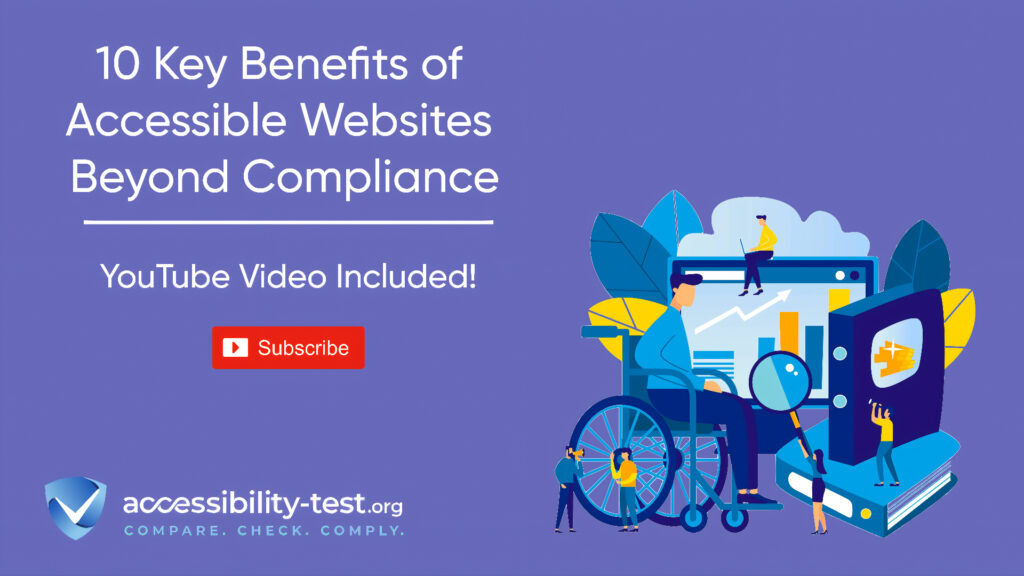
Focus Indicators
Visible focus indicators are an essential component of web accessibility, particularly for users who navigate websites using keyboards. These indicators serve as visual cues, indicating which element is currently focused and ready for interaction. As many users rely on keyboard navigation due to disabilities or personal preferences, implementing effective focus indicators in web design is critical to providing an inclusive user experience.
The Web Content Accessibility Guidelines (WCAG) 2.2 emphasizes the importance of these indicators. Under guideline 2.4.7, it is stated that all interactive elements must be clearly delineated when they receive focus. This ensures that users can easily determine their current position within the webpage’s hierarchy, decreasing the likelihood of confusion and frustration during navigation. By providing clear and contrasting outlines, web designers can help keyboard users maintain a sense of spatial awareness on the page.
To implement effective focus indicators, web developers should consider using strong, contrasting colors that stand out against the background of the web page. This could involve using borders, backgrounds, or shadow effects to create a distinct visual element that clearly indicates which component is focused. One key recommendation is to ensure that the outline is not only visible but also prominent enough to avoid being overlooked when users tab through interactive elements.
Moreover, it’s advisable to enable customization options that allow users to modify focus indicators according to their visibility preferences. By allowing users to adjust the size and color of focus outlines, developers can cater to a wider array of visual impairments, thus enhancing accessibility. In conclusion, the implementation of visible focus indicators is a fundamental aspect of modern web design that supports keyboard navigation and promotes overall accessibility for all users.clusivity and accessibility.
Accessible Authentication Methods
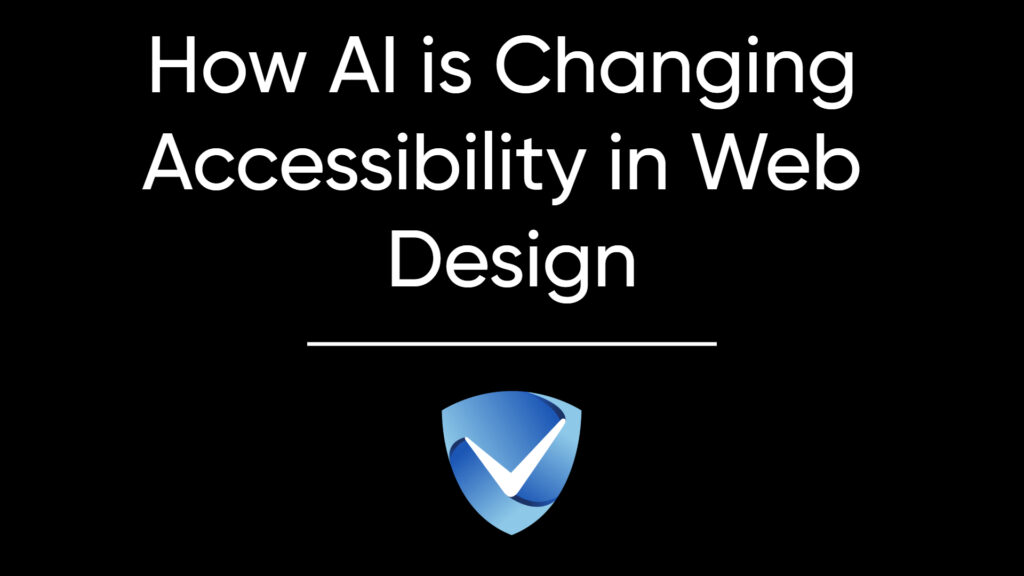
As web accessibility continues to evolve, simplifying authentication processes is paramount to reducing cognitive load and ensuring inclusivity for all users. Traditional methods, such as complex passwords, can create barriers for individuals with varying abilities, highlighting the need for alternative authentication methods. By integrating more accessible options, websites can significantly enhance the user experience.
One effective approach is the implementation of biometric logins. This method utilizes unique physical traits, such as fingerprints or facial recognition, making it easier for users to authenticate without the burden of remembering complex passwords. Biometric authentication not only streamlines the login process but also provides a layer of security that is increasingly becoming the industry standard. The adoption of such technology aligns with the goal of creating an accessible environment, where individuals with cognitive disabilities or memory issues can navigate with greater ease.
Additionally, one-time codes serve as another viable alternative. These codes can be sent via email or SMS, allowing users to log in without the need for a traditional password. The simplicity of this method significantly lessens cognitive demands on users, making the login process more straightforward and less prone to user error. Furthermore, it fosters a sense of control for users who may struggle with remembering multiple passwords.
Another crucial feature that can enhance accessibility during authentication is the auto-complete function. This feature can save users time and reduce errors by automatically suggesting previously entered information. It can particularly benefit users with disabilities who may find typing cumbersome or challenging. By fostering a seamless login experience through accessible authentication methods, web developers can promote inclusivity and create an environment where all users can engage with digital content effectively.
Voice Navigation Integration
As web design continues to evolve, voice navigation tools are becoming increasingly essential for creating accessible websites. With the advent of voice user interfaces (VUIs), designers have the opportunity to integrate features that allow users to interact with websites using voice commands. This advancement not only benefits individuals with mobility impairments but also serves those who prefer voice interactions over traditional input methods, such as keyboard and mouse navigation.
The implementation of VUIs can significantly enhance user experience by providing an alternative method of navigation that is often faster and more intuitive. Users can issue verbal commands to perform actions such as searching for content, browsing categories, or even filling out forms. This ease of use encourages greater site engagement and aids individuals who may struggle with standard navigation techniques. The potential for hands-free operation contributes to a more comfortable browsing experience for diverse groups.
Furthermore, the integration of voice navigation supports inclusivity in web design. By accommodating a wider range of user preferences and abilities, designers are better positioned to meet the needs of all visitors. This consideration is particularly important as users with visual impairments or dexterity issues may find conventional navigation methods challenging. The ability to access content through voice commands allows for a more equitable online environment, ensuring that everyone can participate fully in digital experiences.
In corporate settings, organizations that adopt voice navigation features may also benefit from increased productivity. Employees who can use voice commands to navigate internal websites or databases can complete tasks more efficiently, highlighting the multifaceted advantages of incorporating VUIs into site structure. By prioritizing voice navigation integration, businesses can foster a more accessible, user-friendly platform that caters to the preferences of their audience.
Consistent Help Mechanisms
The introduction of the WCAG 2.2 success criterion for ‘consistent help’ underscores the importance of providing users with easily accessible support throughout their web experience. To promote effective navigation and assist users in accomplishing their goals, it is crucial that help options, including FAQs, contact forms, and live chat, are consistently placed across the website. By establishing a uniform location for these resources, users are less likely to experience frustration or confusion when seeking assistance. This consistency fosters a sense of familiarity, enabling users to focus on their tasks rather than searching for help.
When designing a website, it is essential to analyze the various stages of a user’s journey. At any point, users may encounter challenges and require guidance. By implementing a consistent approach to help mechanisms, websites can facilitate seamless communication and support. For instance, placing a prominent help button in a fixed location on every page allows users to quickly access assistance no matter where they are in their browsing experience. Furthermore, ensuring that help sections are easily identifiable through clear icons or labels can enhance user satisfaction and increase the likelihood of users utilizing these resources when needed.
Moreover, integrating various types of help mechanisms caters to diverse user preferences. While some users may prefer written FAQs, others might benefit from real-time assistance through live chat. By offering a variety of support options in a consistent manner, websites can better accommodate varying needs, ultimately enhancing the overall accessibility of the site. In an era where user experience is paramount, prioritizing consistent help mechanisms not only minimizes confusion but also demonstrates a commitment to inclusivity and accessibility for all users.
Color Contrast Enhancements
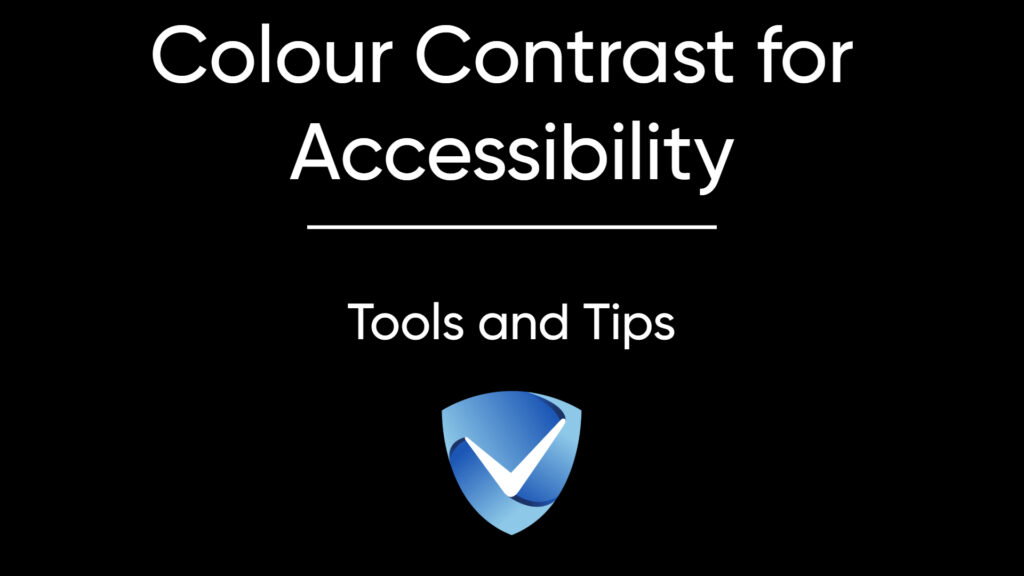
Ensuring appropriate color contrast is essential for creating accessible websites, particularly for users with low vision or color blindness. The Web Content Accessibility Guidelines (WCAG) specify minimum luminance contrast ratios that should be adhered to in order to enhance readability and usability. These guidelines recommend a contrast ratio of at least 4.5:1 for normal text and 3:1 for large text. By maintaining these contrast standards, website designers can greatly improve the experience for users who may struggle with poor visibility.
When selecting color palettes for websites, it’s important to consider not only the aesthetic appeal but also the functionality of color combinations. Complementary color schemes can enhance visibility, but it is also vital to test these combinations to ensure they meet the established WCAG contrast ratios. Using online accessibility checkers can streamline this process, providing immediate feedback on how color choices hold up against the required standards.
Moreover, achieving effective color contrast is not solely about pairing dark text with light backgrounds or vice versa; it also involves understanding how color blindness affects perception. For example, certain color combinations, such as red and green, may be indistinguishable to users with color vision deficiencies. To combat this, designers should consider incorporating textures or patterns together with color to convey information without relying on visual color alone.
Implementing color contrast enhancements not only aligns with ethical practices in web design but is also a legal requirement in many jurisdictions. By prioritizing accessible color choices, developers can create more inclusive websites that reach a broader audience. Ultimately, the goal is to foster an environment where all users, regardless of their visual capabilities, can navigate and engage with digital content effectively.
Accessible Notifications
In the rapidly evolving digital landscape, ensuring that website notifications are accessible is paramount for providing an inclusive user experience. Accessible notifications play a critical role in communicating dynamic changes, such as error messages, alerts, or confirmations of successful form submissions. These notifications must be promptly delivered in a manner that all users, including those who rely on assistive technologies, can readily understand and act upon.
To achieve effective communication of accessible notifications, adherence to best practices is essential. Firstly, notifications should be presented in a prominent position on the webpage to ensure visibility. This may include placing them at the top of the page or providing in-page alerts that do not disrupt the user’s flow. Furthermore, employing clear and concise language enables users to quickly grasp the message’s intent, reducing the cognitive load associated with processing complex information.
Another crucial aspect is the integration of ARIA (Accessible Rich Internet Applications) landmarks and roles. ARIA attributes, such as `role=”alert”` or `role=”status”`, help screen readers identify and announce notifications immediately to users. Additionally, it is important to ensure that these notifications are compatible with various assistive devices, as each user may use different technologies to navigate web content.
Visual cues, such as color changes or icons, can enhance notifications’ effectiveness but should not be solely relied upon. Alternative text descriptions must be included to ensure that users with visual impairments receive the same information. Incorporating feedback mechanisms within notifications can also empower users to report issues or resolve errors smoothly.
By focusing on these strategies, web developers and content creators can significantly enhance accessible notifications, improving the overall experience for all users. Ultimately, a commitment to accessibility ensures that websites are welcoming spaces where everyone can engage fully with digital content.
Test your site’s feature compliance with our free scanner
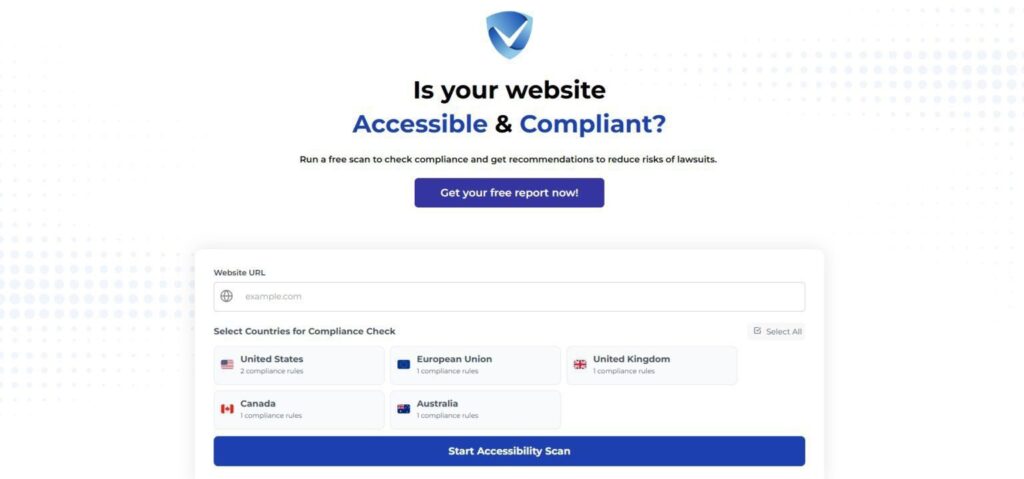
In our exploration of the top accessible website features for 2025, we have identified a suite of enhancements that align with WCAG 2.2 standards. These features not only ensure compliance but significantly enhance the inclusivity of user experiences across the digital landscape. By integrating options such as keyboard navigability, screen reader compatibility, and robust color contrast, web developers can cater to a diverse array of user needs, ultimately fostering a more engaging and accessible environment.
The importance of adopting these features cannot be overstated. An accessible website opens doors for individuals with disabilities, allowing them to interact with content effortlessly. Furthermore, promoting accessibility enhances the overall usability of a site, increasing user satisfaction and retention. This dual advantage of compliance with regulations and improved user experience underlines the necessity of reevaluating current web designs.
As we venture into 2025, embracing these accessible website features is not merely a legal requirement but a moral imperative. It lays the foundation for a more inclusive digital world, empowering all users to navigate the internet without barriers. Each feature discussed, from alternative text for images to user-friendly navigation structures, comes together to create a holistic approach to web design that values diversity and user-centricity.
As we conclude this discussion, we encourage readers to critically assess the accessibility of their existing websites. A practical first step in this direction is utilizing a free accessibility scanner. These tools provide valuable insights into potential barriers, enabling website owners to rectify issues, improve compliance, and ultimately foster an inclusive online space. Take action today to ensure your website meets the accessible requirements of tomorrow.



